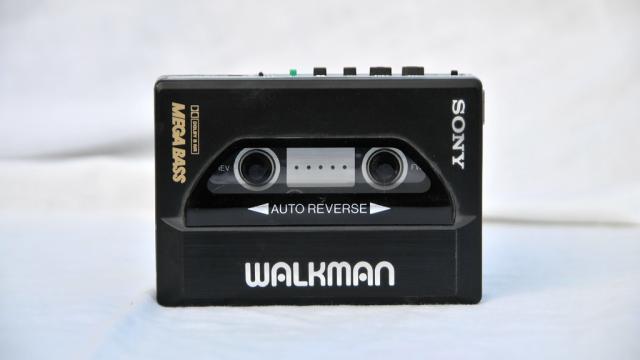Sony’s new CEO, Kenichiro Yoshida, has a three-year plan to improve the company’s profits. During a presentation to investors today, he promoted three core areas of investment – services, semiconductors, and AI/robotics. If you’re a fan of Sony, one key thing seems to be missing from that future: Gadgets.
Ahead of Sony’s investor relations day, rumours spread that Yoshida would announce a movement away from consumer hardware development and while he didn’t exactly come out and say that explicitly, what he did say had nothing at all to do with gadgets. Yoshida primarily focused on the services that Sony offers as the path forward, citing his own past experience with content as well as the success of Sony’s lucrative life insurance business. If Sony’s making big bets on consumer hardware, it’s not saying so publicly.
This might seem like something of a sea change for Sony, a company which has invented and reinvented its hardware business for generations with innovations like the Walkman, Blu-ray players, and full-frame mirrorless cameras. But for anyone who has been paying attention, the writing has been on the wall.
Yoshida recently took over from Kaz Hirai’s, who had run the company since 2012. In that time, Sony’s stock price more than doubled, but almost every facet of its hardware business has been on a downward trajectory since 2011.
Hardware totals declined from 81.1 million units in 2011 to just an estimated 41.3 million in 2018. Despite some industry-leading products, its camera division fell from 21 million units sold to an estimated 3.8 million over the last eight years as the business couldn’t overcome the effect of smartphones. As for smartphones, Sony’s once robust business has shrunk from 22.5 million units to just 10 million amidst the company’s failures to market its phones outside Asia, as well as its failure to keep pace with some design trends like the move to bezel-less displays.
The lone bright spot in Sony’s hardware business has been PS4 sales – but that ride is almost over, with sales dropping 18 per cent in the most recent earnings and further declines forecast for 2018. The CEO acknowledged that the PS4 is approaching the end of its lifecycle and that after selling more than 74 million consoles, it expects further declines in 2018.
That said, Sony expects gaming related income to make up for the decline in unit sales the company has seen paying subscribers for its online network jump by 64 per cent over the last two years.
This underscores the key thing about Sony’s business these days: The reason Sony is still doing pretty great is because of the growth in online gaming, subscriptions, software, and streaming. In other words, the PS4 is still a cash cow even if the actual console’s sales are winding down.
With that in mind, Yoshida’s presentation emphasised that more first-party content, DLC, the PSN network, music, and a newly resurgent film studio are the future for revenue. In fact, the biggest news from the event was the announcement that Sony will buy out of 60 per cent of EMI’s music library — netting 2.1 million songs — for about $US2 ($3) billion. That deal brings its ownership of EMI up to 90 per cent. Earlier this month, Sony sold off half of its stock in Spotify for close to a billion dollars. The signal seems to be that Sony will focus more heavily on licensing.
As a Sony stan, this transition hurts. I got a four-year-old A7S mirrorless camera this year, and it’s my favourite gadget purchase in a long time. The PS4 bought a few years ago got me back into gaming after skipping a generation. I even use the struggling Vue streaming service out of laziness – it’s fine. But outside of personal purchases, Sony’s products are some of the best we see come through the Gizmodo office. Playstation VR was the best entry-level solution for VR gaming, even if that may not be the case going forward. The MDR-1000X wireless headphones are outstanding. Even when it’s not kicking arse, Sony still has good, middle of the road alternatives like the LF-S50G smart speaker.
Maybe this shift will really just mean that Sony keeps doing the things it’s good at doing and drops product categories where it doesn’t excel. Sony’s mobile-camera chips can be found across the industry, including in iPhones, but the smartphones it actually manufactures don’t have a huge following. Maybe cutting its losses in the smartphone business could help in other areas. Sony did commit to making an additional $US9 ($12) billion investment in its image sensors but had nothing to say about smartphones. And hell, Sony’s latest phones almost look like the company is getting serious about them again.
The fact is, innovation is slowing in traditional consumer tech categories. People don’t feel like they have to replace their phone or camera as often as they used to. New categories aren’t emerging as obvious spots for growth. Even Apple is pushing its subscription businesses hard despite the tiny portion of its revenue that it represents — and given Sony’s much smaller scale, it makes sense it would move in that direction too. Still, we’ve seen Sony rebuild its hardware business before. Until it figures it out, we’ll just have to “crouch down” with Sony and wait it out.
